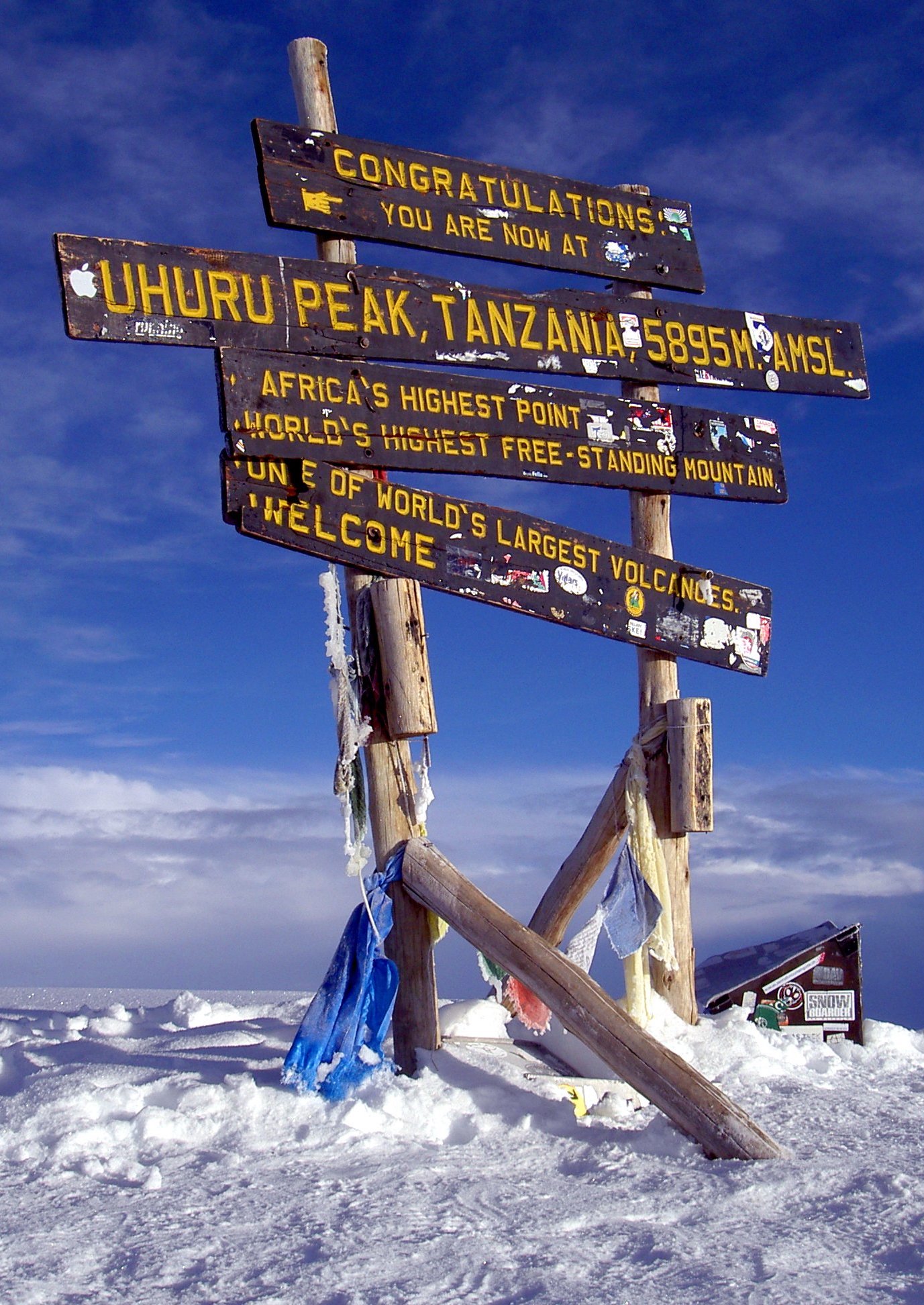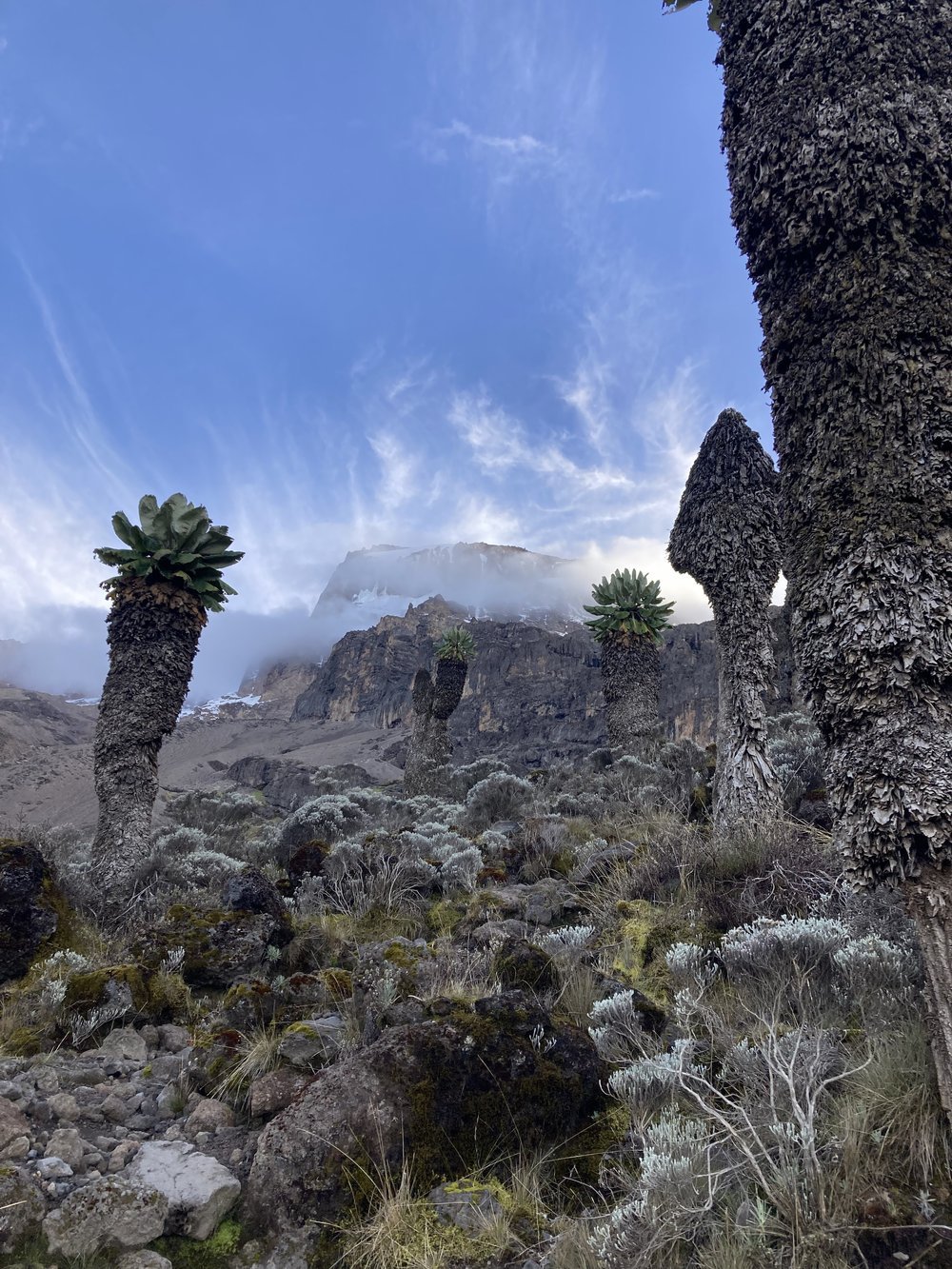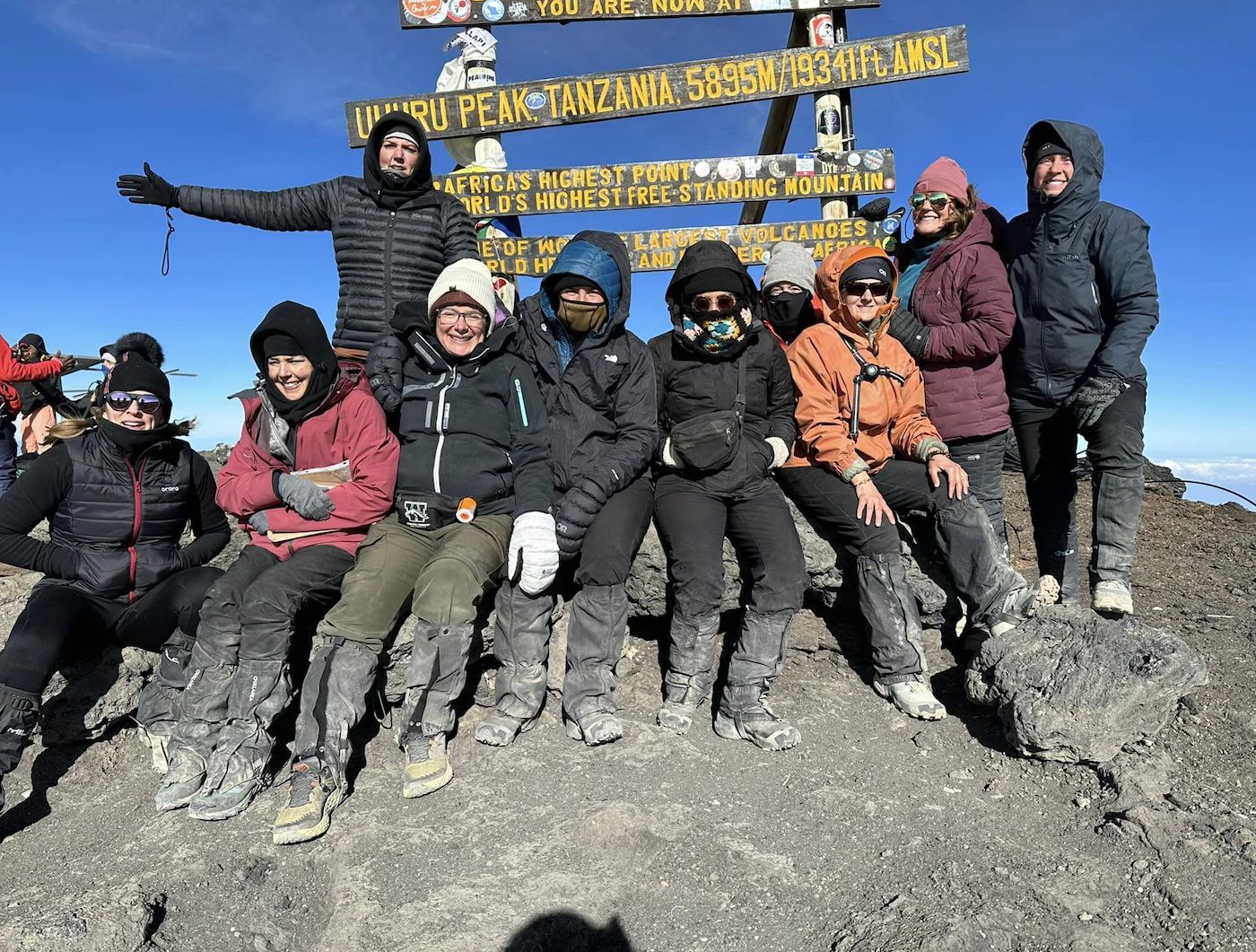Uhuru Peak, soaring at an altitude of 5,895 meters, is the zenith of Africa’s free-standing mountains. Nestled on Kibo, one of Mount Kilimanjaro’s volcanic cones, this peak draws in an astounding 20,000-35,000 hikers annually, all vying for that exhilarating moment of standing atop Africa. The journey to Uhuru gifts climbers with panoramic vistas of Tanzania’s diverse landscapes, making every step worthwhile.
Mount Kilimanjaro, a long-slumbering volcano, ranks high among must-visit destinations for ardent trekkers and climbers worldwide. Not only is it Tanzania’s crowning glory, but it also holds the title of Africa’s tallest peak. Of the Seven Summits—the loftiest mountains across each continent—Kilimanjaro is renowned for being the most accessible, making it a magnet for seasoned climbers and budding hiking enthusiasts alike.
Fondly dubbed “Everyman’s Everest,” Mount Kilimanjaro welcomes hikers from all walks of life. While ascending such an imposing mountain is far from a walk in the park, Kilimanjaro’s allure lies in its inclusivity. With adequate preparation, appropriate gear, and a resilient spirit, even those new to mountaineering can conquer Uhuru Peak, basking in the glory of one of the Seven Summits’ most picturesque panoramas.
Delving Deeper into Uhuru Peak
Serving as a beacon for adventurous souls globally, Uhuru Peak on Mount Kilimanjaro beckons tens of thousands of trekkers each year. Despite its formidable height and challenges, a commendable 40% of those who undertake this journey triumphantly plant their flags on its summit. The mountain presents hikers with a choice of five to eight distinct routes, each characterized by its own set of challenges and sceneries. To augment the chances of a successful ascent, experienced mountaineers and guides are at hand to lead climbers, offering invaluable insights and assistance throughout the expedition.
The Translation and Significance of “Uhuru”
Mount Kilimanjaro is adorned with three principal peaks: Kibo, where the revered Uhuru Peak stands tall; Mawenzi, soaring to 5,149 meters; and Shira, reaching 3,962 meters. ‘Uhuru,’ a term rooted in the rich Swahili language, translates to ‘freedom.’ This name holds profound historical significance. In 1961, Tanganyika, which later amalgamated with Zanzibar to form present-day Tanzania, celebrated its emancipation from British colonial rule. In honor of this pivotal moment, the highest point of Kibo—and indeed all of Africa—was christened ‘Uhuru Peak.’ This summit stands not just as a testament to the mountain’s grandeur but also as an emblem of a nation’s hard-won freedom.



 There’s no official maximum age limit for climbing Kilimanjaro. However, climbers must be at least 10 years old to receive a climbing permit. It’s essential for older climbers or those with underlying health conditions to consult with their doctors before attempting the climb. Many climbers over 60 and even some over 70 have successfully reached the summit.
There’s no official maximum age limit for climbing Kilimanjaro. However, climbers must be at least 10 years old to receive a climbing permit. It’s essential for older climbers or those with underlying health conditions to consult with their doctors before attempting the climb. Many climbers over 60 and even some over 70 have successfully reached the summit.